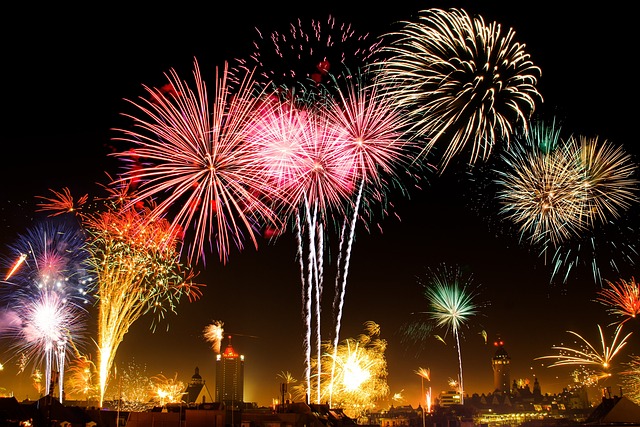New Year’s Day Celebrations Around the World
New Year
 A New Year’s celebration has been a major religious and cultural event for many centuries. The New Year is traditionally a time for introspection and new beginnings. During this festival, people often ring in the new year with fireworks and parades. It’s also a time to think about the previous year and for some people, time to set resolutions to make it a better year to come, from a personal development point of view. Of course, it’s important to choose good resolutions.
A New Year’s celebration has been a major religious and cultural event for many centuries. The New Year is traditionally a time for introspection and new beginnings. During this festival, people often ring in the new year with fireworks and parades. It’s also a time to think about the previous year and for some people, time to set resolutions to make it a better year to come, from a personal development point of view. Of course, it’s important to choose good resolutions.
A number of cultures celebrate the New Year on different days throughout the year. Some cultures begin the new year on the vernal equinox, whereas others choose the autumnal equinox. Others may choose the winter solstice as the start of their new year.
Several civilizations, such as the Phoenicians and the Persians, chose the autumnal equinox as their new year’s start. Others, such as the Greeks and the Romans, began their new years on the first day of the month of March, following the lunar cycle.
Calendars
While the calendars used by some of these cultures differed, most of them used the Gregorian calendar, which is based on a solar year. In fact, the Gregorian calendar is the most commonly used calendar system in the world. However, the Gregorian calendar was not always used by Christians. Before it was introduced by Pope Gregory XIII in 1582, most Western European countries adopted January 1 as the official new year’s day.
Many Asian nations celebrate the New Year on the Lunar calendar. These calendars are based on the new moon after the Winter Solstice. Chinese, Korean, and Vietnamese new years are generally celebrated in late January.
Customs
The celebration of the new year is also common in many Latin American countries, such as Peru, Colombia, and Mexico. People in these countries often run around with suitcases to ensure they can travel during the upcoming year. They also typically eat 12 grapes at midnight to symbolize the new year.
In the United States, the New Year’s Day celebration is a combination of family, feasting, and sports. Traditional meals are served, along with concerts and fireworks. As the new year starts, the Times Square Ball is lowered from its flagpole. This ball weighs about 11,875 pounds and is twelve feet in diameter. After a countdown, the ball drops from the tower. When it does, a song called “Auld Lang Syne” hits the airwaves. At the same time, the Times Tower lights up with “1908” numbers to signal the arrival of the new year.
Although many of these celebrations date back to the Egyptians and the Romans, many of the traditions and superstitions have evolved over the centuries. For example, some neo-pagans still interpret the Samhain festival as the “first” of the new year. Other cultures use superstitions, such as bringing good luck by eating food or wearing jewelry.
In Scotland, in the UK, the New Year is called Hogmanay and is a great celebration. One custom associated with Hogmanay is first footing, that is the first person to enter the house after midnight. The first person to enter a home in the new year is seen as a bringer of good luck for the coming 12 months. Traditionally the first-foot should be a tall dark-haired male who is not already in the house when midnight strikes and should bring gifts such as whisky, a log or coal.
A few of the most popular New Year’s Day festivities include parades, fireworks, concerts, and parties. The famous Rose Parade in Pasadena, California, is one of the most recognizable New Year’s Day parades. Hundreds of local imitations also occur in the United States.